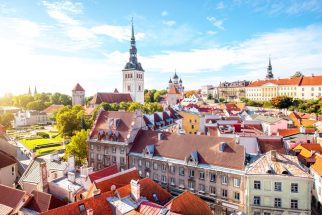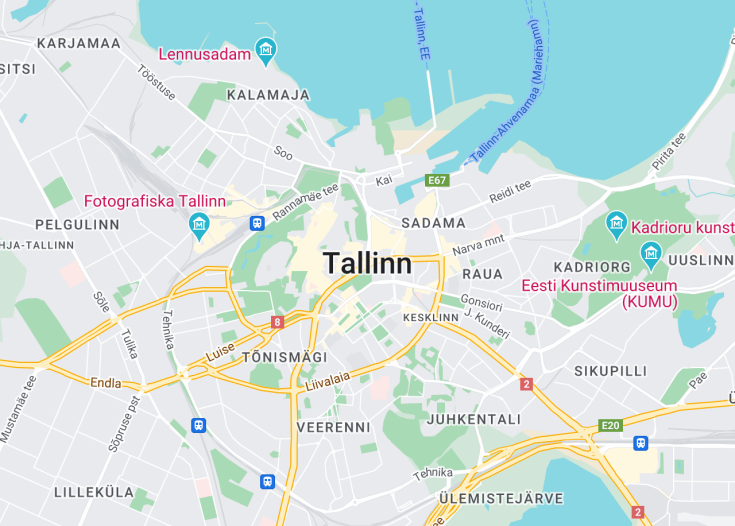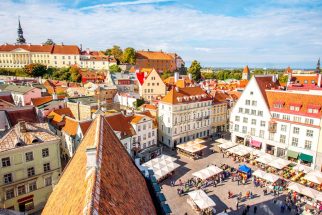Today Tallinn is the financial and business capital of Estonia and is well-known for its well preserved medioeval old town, named Vanalinn (UNESCO World Heritage).
Member of the Hanseatic League since 1285, Tallinn, today’s capital of Estonia, was for centuries one of the most important transit cities for trade between Russia and Europe. Today, thanks to its strategic position between the technologically advanced Scandinavia and the resources of the Russian Federation, it attracts investors from all over the world. Tallinn has the highest number of start-ups per person among European countries and is the birthplace of many international high-technology companies, including Skype, Bolt and Wise. The city is home to the headquarters of the European Union’s IT agency, and to the NATO Cyber Defence Centre of Excellence. In 2007, Tallinn was listed among the top-10 digital cities in the world.
Tallinn is not a huge city and it is walkable so 2 or 3 days are enough to visit it if you don’t want to miss out on all the best things to do in Tallinn. Even Kadriorg Palace, which is ostensibly outside the city, can be seen in a morning or afternoon.
The city is a destination to visit all year round but the ideal time to visit it is May-June because of an amount of factors such as the climate, cost of travel and accomodation, as well as avoiding peak holiday periods. In summer, the temperature in Tallinn can raise high as 27°C (80°F).
Top things to do & see in Tallinn
Select the following sights and activities to discover best tickets and tours available in Tallinn.
Tallinn: Estonia’s Historic Jewel
| Country | Estonia |
| Time in Tallinn | GMT+2 |
| Language spoken | Estonian |
| Population | 437,619 (Source: Statistics Estonia, 2023) |
| Currency | Euro (EUR €) |
| Airports |
|
Tallinn, the capital city of Estonia, is steeped in history and culture. Located on the northern coast of the country, facing the Gulf of Finland, it is one of the best-preserved medieval cities in Europe. Its Old Town, a UNESCO World Heritage site, is a maze of cobblestone streets and alleyways, dotted with historic buildings, quaint cafes, and artisan shops. Tallinn seamlessly combines its rich past with modern amenities and vibrant cultural life, making it a fascinating destination for tourists and historians alike.
Where is Tallinn?
Nestled on the northern coast of Estonia, Tallinn faces the Baltic Sea and is a short voyage across from Helsinki, Finland..
Distances:
| Route | Distance by car | Time by car |
|---|---|---|
| Tartu to Tallinn | 186 km | 2 hours 30 min |
| Pärnu to Tallinn | 128 km | 1 hour 50 min |
What is Tallinn famous for?
Known for its well-preserved Old Town, Tallinn is also famous for its rich history, vibrant tech scene, and as a cultural hub with numerous museums, galleries, and theaters.
History
Up to 1219: Ancient Beginnings
The history of Tallinn, the capital of Estonia, traces back to ancient times when it was inhabited by Finno-Ugric tribes. Archaeological findings suggest that the area was settled by these tribes as early as 5000 BCE. By the first millennium, the region had become a pivotal trading hub due to its strategic location along the Baltic Sea, facilitating vibrant trade routes with both Western Europe and the eastern territories.
1219–1561: Danish and Teutonic Rule
In 1219, Tallinn fell under the control of Danish crusaders led by King Valdemar II. The Danes built the town’s foundational fortifications, which led to the city being formally recognized and named Reval. In 1346, control of the city was sold to the Teutonic Order, influencing the development of architectural and cultural facets that remain prominent to this day. The period saw significant German influence as many German merchants and craftsmen settled in the region.
1561–1710: Swedish Influence
After a power struggle in the Baltic region, Tallinn came under Swedish rule in 1561. This period was marked by administrative reforms and the advancement of education and social institutions, shaping much of the city’s modern character. During Swedish rule, the city witnessed the construction of significant buildings and the fortification of its defenses.
1710–1918: Tsarist Era
With the Great Northern War, Tallinn was overtaken by Russia in 1710 and remained part of the Tsarist empire until 1918. This period introduced Russian architectural styles and strengthened the city’s status as a key port. The era also saw periods of intense Russification, though it stimulated growth and modernization, particularly in the 19th century.
1918–Present: Independence and Modern Era
Estonia declared independence in 1918, leading to major political and social changes in Tallinn. After brief occupations by Germany and the Soviet Union during and after World War II, Estonia regained its independence in 1991. Since then, Tallinn has transformed into a vibrant, modern capital with a strong sense of its rich history intertwined with contemporary advancements. The city has particularly focused on technology and cultural development, playing a crucial role in the digital and cultural landscapes of modern Europe.
Visit Tallinn
What to see and do in Tallinn, Estonia
Explore the enchanting city of Tallin, where the past meets the present. Visitors can delve into its vibrant history at the well-preserved medieval Old Town, a UNESCO World Heritage site. Highlights include the Toompea Castle, the seat of Estonian government and the majestic Alexander Nevsky Cathedral. Art enthusiasts will enjoy Kumu, the museum of Estonian art. For a touch of nature, stroll through Kadriorg Park, a baroque garden established by Peter the Great.
- Toompea Castle
- Alexander Nevsky Cathedral
- Kumu – Museum of Estonian Art
- Kadriorg Park
Annual Events in Tallinn
Throughout the year, Tallinn hosts an array of cultural and artistic events. Prominent amongst them is the Tallinn Music Week, held every spring, turning the city into a vibrant hub of music and culture. The Tallinn Black Nights Film Festival, taking place in November, is another major event, drawing cinema enthusiasts from around the globe.
Best time to visit Tallinn
The best times to visit Tallinn are during late spring and early autumn when the weather is pleasantly mild and the city is less crowded. May to September offers the warmest climate and a full slate of events, making it ideal for exploring the city’s outdoor and cultural activities.
Is Tallinn worth visiting?
Tallin is undoubtedly worth a visit for its fascinating blend of history, culture, and modernity. The beautifully preserved medieval Old Town, vibrant cultural scene, and friendly locals provide a welcoming atmosphere for all visitors. While the city can be crowded during peak tourist seasons, and winters might be harsh, the unique charm of Tallinn during quieter months and the array of events and attractions make it a compelling destination year-round.










